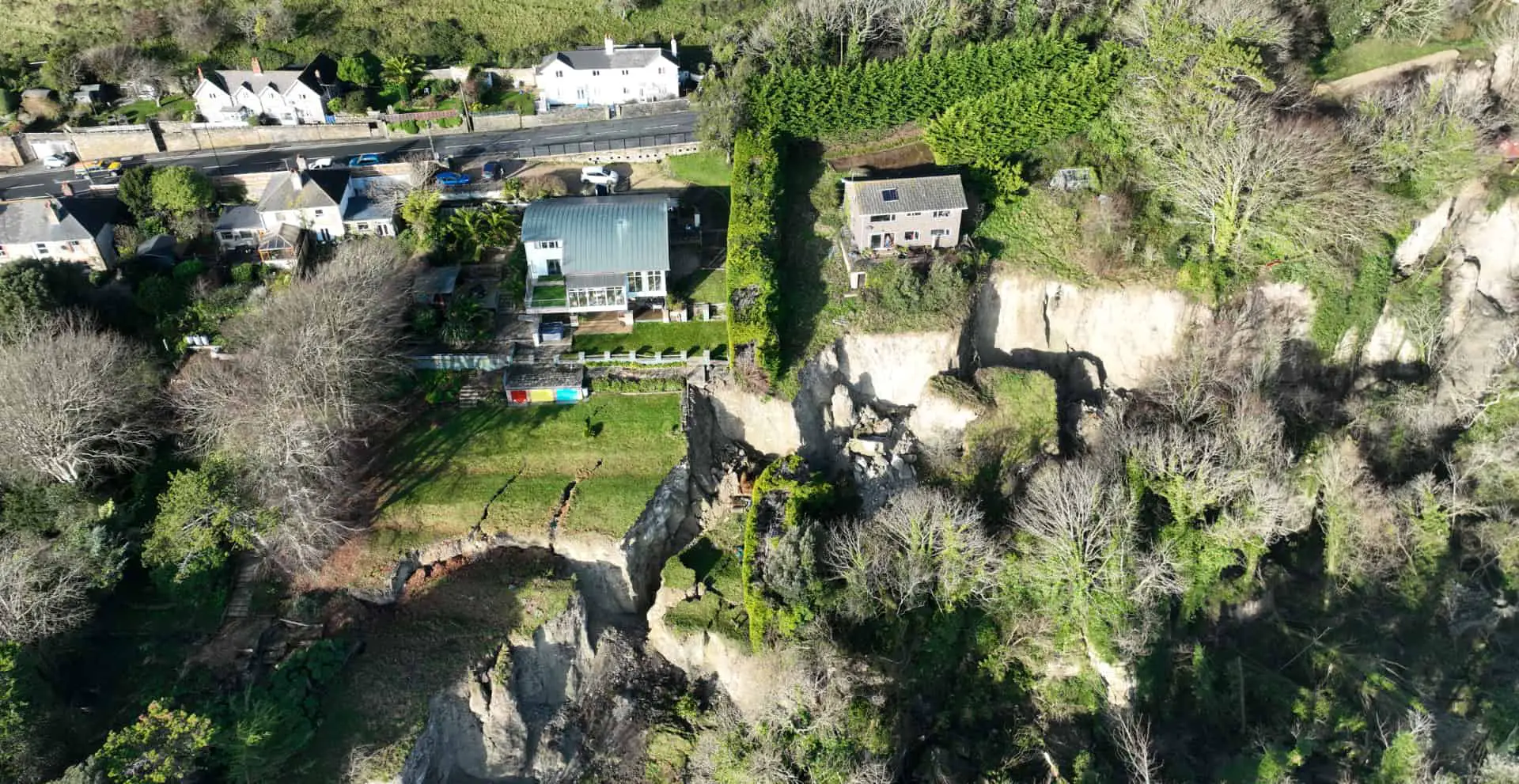As reported recently by News OnTheWight a range of specialist monitoring equipment to record movement in and around Leeson Road has now been installed.
The data from the new equipment will indicate the movement of the ground as it happens, but in addition, there is a requirement to drill new boreholes which will predict the future movement of ground.
Summer drilling for boreholes
However, Isle of Wight council advise that boreholes cannot be drilled until mid-summer — July or August — when the ground is theoretically at its driest. They say that a full picture of the situation will not start to appear until both the boreholes and monitoring equipment have been installed and are providing data.
In an ideal world, the experts would like to see continuous readings of little or no movement from the monitoring equipment and the boreholes.
Establishing a long-term pattern
They say that if the data shows there is still movement surrounding the landslip, then the monitoring will continue to start to establish a long-term pattern.
A spokesperson for the council says,
“We will continue to work with specialist technical consultants to ensure the data is interpreted accurately and used appropriately to ensure that the right decisions are taken.”
The council say that this data will be used as a key part of the discussions about reopening the road either fully or partially for pedestrians and cyclists.
The Bonchurch landslide
Around 14 million cubic metres of land was displaced in December 2023, as one of the largest landslides recorded on the south coast, resulted in home evacuations, and road closures.
Inspections of the road started as soon as possible after the landslide, with Island Roads carrying out level surveys and twice weekly walked inspections since December 2023.





